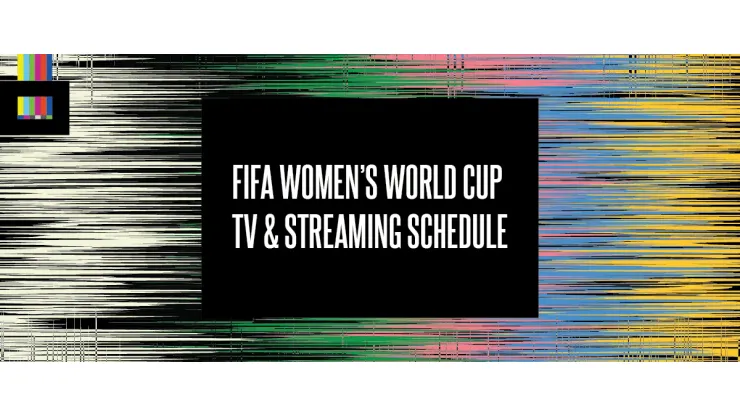Our Women’s World Cup TV schedule as all the info on the tournament.
The host nation(s) for the FIFA Women’s World Cup 2027 has yet to be announced.
Similarly, broadcasting rights for the next edition of the biggest women’s soccer tournament in the world are also up in the air. Previously, FOX and Telemundo had been the rights holder for recent tournaments.
In 2019, Telemundo Deportes set the Spanish-language record for the most-watched FIFA Women’s World Cup ever. The network pulled a Total Audience Delivery average of 301,000 viewers – posting a 27% increase over the full 2015 tournament (237,000 viewers). Plus, Telemundo Deportes’ coverage delivered four of the five most-watched FIFA Women’s World Cup matches in Spanish-language history. This was led by the US-Netherlands final that registered a Total Audience Delivery of 1.6 million viewers. It ranked as the most-watched FIFA Women’s World Cup match in Spanish-language history, surpassing by 22% the 2015 USA vs. Japan final (1.27 million).
The 2023 Final, in which Spain defeated England, was the most-watched Women’s Final ever in the US that didn’t involve the United States team.
Speaking of the USWNT, they drew the highest viewership of the 2023 tournament for each of their games. That’s despite some middle-of-the-night kickoff times and a disappointing early exit.
Watch the Women’s World Cup on Fubo:
Our Pick:Includes: Premier League, Liga MX, Ligue 1, + 84 Sports Channels |
|
Here’s the Women’s World Cup TV schedule:
See schedule of women’s soccer on US television and streaming.
Women’s World Cup History
An inspiration in the mosaic of world soccer, the Women’s World Cup has broken down boundaries and championed equality on the biggest platform. This illustrious event has a rich history that reflects the progress of women in sports.
It has transformed into a tribute to perseverance, teamwork, and elegance. It has gone from its modest origins to a spectacular extravaganza, compared to its unofficial forerunners.
The Women’s World Cup has been an integral part of the fight for gender equality and has changed the story of women’s soccer.
The idea behind Women’s World Cup
In 1928, the first-ever documented soccer match included ladies playing. However, the Women’s World Cup has its origins in the late 19th century when female players made their soccer debut. Nonetheless, women-only worldwide contests did not arise until the 1970s.
The Italian Federazione Internazionale Europea Football Femminile (FIEFF) held an unofficial Women’s World Cup in 1970 long before FIFA became involved. Martini & Rossi sponsored the event, attracting considerable audiences.
The next year, in Mexico, Martini & Rossi sponsored yet another “Women’s World Cup” event. The country’s enthusiasm for the event was palpable after the men’s World Cup.
In addition, even match attendance soared into the tens of thousands (and even six figures) in many instances. Named after the Nahuatl word for flower, the mascot Xochitl appeared on keychains, badges, t-shirts, and pennants, among other goods.
The 1980s were filled with a slew of “Mundialitos,” often known as “Little World Cups”. The achievement of the Women’s European Cup, which was established in 1984, served as the impetus for the establishment of the Women’s World Cup.
A worldwide version of this regional event was considered by FIFA after it highlighted the growing interest in and skill level of women’s soccer. In 1988, FIFA hosted an Invitation Tournament in China to gauge interest. Plans to have an official women’s global championship were made after its success, however, FIFA was hesitant to bestow the tournament with the “World Cup” name at the time.
Inaugural tournament and early years
A watershed point in women’s soccer history occurred in 1991 when China hosted the first Women’s World Cup. There were a total of twelve countries who competed, and the first-ever winner was the United States. This tournament proved that women’s soccer could attract spectators and promote the sport to the next level, paving the way for subsequent competitions.
But, people stereotyped women’s soccer players as being inferior to their male counterparts. They also did not see players as professionals and did not treat them accordingly. There was a 10-minute time difference between men’s and women’s games back then.
Problems including underrepresentation, inadequate media coverage, and financing inequality plagued the Women’s World Cup In the ’90s and ’00s. This didn’t stop the event from becoming more prestigious, however.
Notable among these editions is the 1999 tournament that the US hosted. Brandi Chastain’s penalty kick brought women’s soccer into the worldwide limelight. She earned a dramatic win for the host country against China in the legendary final at the Rose Bowl.
Women’s World Cup: 21st century and modern era
Upon the turn of the century, the Women’s World Cup grew and gained more attention than ever before. More countries were able to play and the level of competition increased as the event grew from 16 teams in 1999 to 24 teams in 2015, and again to 32 teams in 2023.
France 2019 was a turning point for the Women’s World Cup. Record-breaking crowds, widespread media attention, and thrilling on-field performances demonstrated women’s soccer’s growing popularity throughout the world.
Interestingly, it wasn’t until 2007 that the Women’s World Cup also included cash prizes. But so much has transpired in that time. In contrast to previous editions, the 2023 competition had four base camps spread out throughout Australia and New Zealand, with a total budget of $435 million.
There was a total of $150 million up for grabs, which is a huge jump from the $30 million prize pool at the 2019 Games. Albeit it’s still less than one-third of the $440 million prize money for the men’s World Cup.
Courtesy of World Soccer Talk, download a complimentary copy of The Ultimate Soccer TV And Streaming Guide, which features details on where to watch all of the leagues from around the world on US TV and streaming.
To find out when soccer games are on, download the free Soccer TV Schedules App which includes listings of all of the live soccer matches available in the United States (available on Apple iOS devices and Android devices).
200+ Channels With Sports & News
- Starting price: $33/mo. for fubo Latino Package
- Watch Premier League, Women’s World Cup, Euro 2024 & Gold Cup
The New Home of MLS
- Price: $14.99/mo. for MLS Season Pass
- Watch every MLS game including playoffs & Leagues Cup
Many Sports & ESPN Originals
- Price: $10.99/mo. (or get ESPN+, Hulu & Disney+ for $14.99/mo.)
- Features Bundesliga, LaLiga, Championship, & FA Cup
2,000+ soccer games per year
- Price: $5.99/mo
- Features Champions League, Serie A, Europa League & Brasileirāo
175 Premier League Games & PL TV
- Starting price: $5.99/mo. for Peacock Premium
- Watch 175 exclusive EPL games per season







